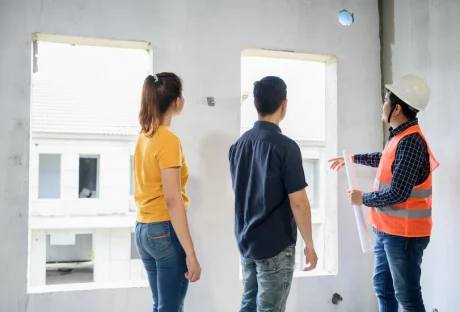The real estate market, for long, remained a lucrative investment opportunity, attracting individuals from all walks of life. Whether you’re looking to build wealth, trigger passive income, or increase the value of your investment portfolio, the realty sector offers a multitude of benefits.
However, stepping into the world of property investment can be intimidating for beginners. With careful planning, research, and guidance, you can navigate the real estate industry and set yourself up for success.
Define Your Goals and Strategy

Before diving into the real estate sector, it’s essential to define your goals and investment strategy. Are you in search of long-term rental income, fix-and-flip opportunities, or perhaps an amalgamation of both? Determining your goals as well as strategies helps you in shaping your investment approach and guides your decision-making process.
Enlighten Yourself
Investing in real estate requires a solid understanding of market dynamics, financing options, property valuation, and legal regulations. Enlighten yourself by reading books, attending seminars, and following reputable real estate blogs. Building a knowledge base will boost your confidence and assist you in making informed decisions.
Establish a Budget
One of the crucial steps in entering the realty market is establishing a budget. Take note of your financial budget and identify how much you can actually afford to make real estate investments. Consider factors such as value-adds, down payments, closing costs, property management fees, and potential repairs or renovations. It’s crucial to have a clear picture of your financial limitations and avoid overextending yourself.
Research Local Markets
Real estate markets can vary significantly from one location to another. Research local markets to identify areas with strong growth potential, rental demand, and favorable investment conditions. Analyze factors such as population trends, job growth, infrastructure development, and proximity to amenities. Familiarize yourself with market cycles to determine the optimal time to buy or sell properties.
Build a Network of Professionals

Having a reliable team of professionals is vital for success in real estate. Seek out a property agent who specializes in investment properties, a mortgage broker who can help you secure financing, and a property inspector to assess the condition of potential purchases. Building relationships with these professionals will provide you with valuable insights and guidance throughout your real estate journey.
Secure Financing
Unless you have substantial cash reserves, you’ll likely need financing to enter the real estate market. Explore different financing options, such as conventional mortgages, Federal Housing Administration (FHA) loans, or private lenders. Take the time to compare interest rates, terms, and eligibility criteria to find the most suitable financing option for your investment strategy.
Start Small and Diversify
For beginners, it’s often advisable to start with a smaller investment property. This approach allows you to gain experience, understand the intricacies of property management, and minimize potential risks. As you become more comfortable, consider diversifying your portfolio by investing in different types of properties, such as residential, commercial, or multi-unit buildings. Diversification can provide stability and mitigate the impact of market fluctuations.
Conduct Due Diligence
Thoroughly evaluate any property before making a purchase. Conduct inspections, review financial statements, analyze rental income potential, and research the property’s history. Understanding the property’s condition, potential expenses, and income-generating capabilities will help you make an informed decision and avoid costly mistakes.
Develop a Long-Term Mindset

Real estate investment is typically a long-term endeavor. While there may be opportunities for quick profits through fix-and-flip strategies, a sustainable and profitable real estate portfolio is built over time. Adopt a long-term mindset and be patient with your investments. Focus on acquiring properties with strong fundamentals and the potential for appreciation and cash flow.
Continuously Learn and Adapt
The real estate industry is dynamic and ever-changing. Stay updated on market trends, new regulations, and industry innovations. Continuously aware of yourself and be willing to adapt your investment strategy as needed. Embrace the learning process and seek opportunities for growth and improvement.
Entering the real estate industry as a beginner can be an exciting and rewarding journey. With careful planning, research, and a commitment to learning, you can build a successful real estate portfolio. Remember, patience and persistence are key, and always seek professional advice when needed.
Read Also:






















